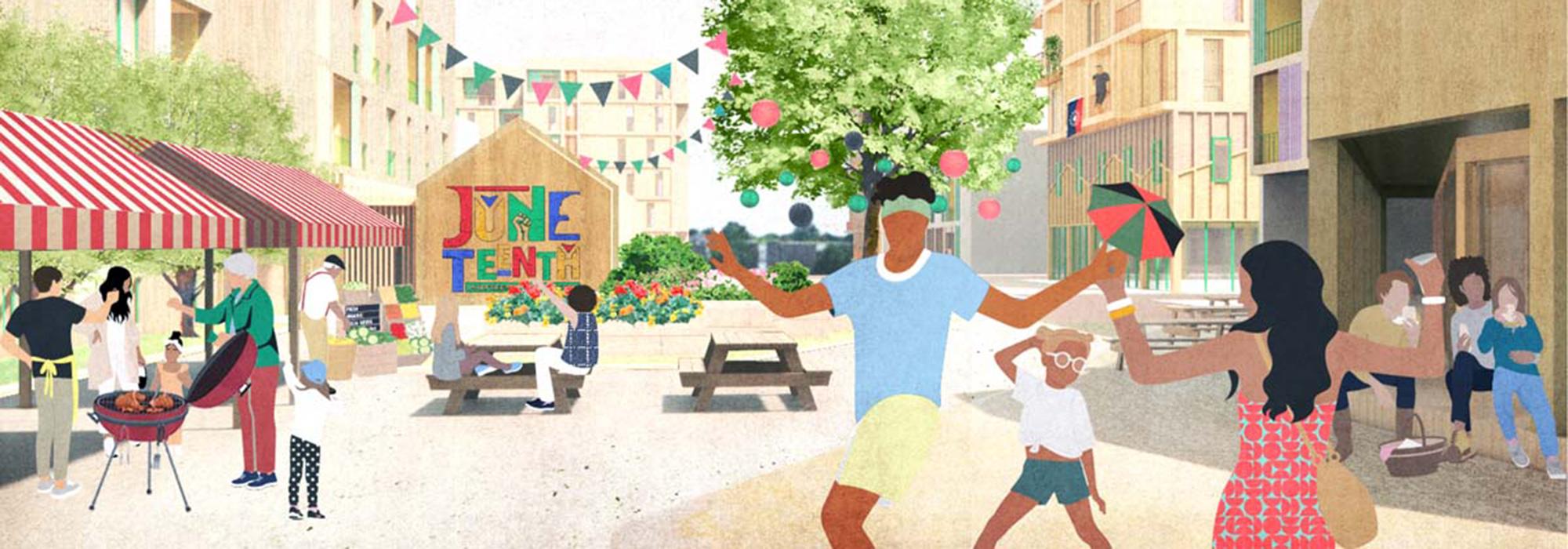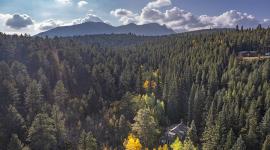Great Migration + Memorial Highway
An Exhibit from the Harvard Graduate School of Design + Community Advocates Highlights New Rochelle’s Historic Black Neighborhoods
One of thirteen sites included in The Cultural Landscape Foundation’s (TCLF) Landslide 2021: Race and Space, the Lincoln Avenue Corridor in New Rochelle, New York, has been affected since the 1950s by the erasure of physical spaces that defined its historic Black community. As was the case in many communities across America, the construction of Interstate 95 cut through the Black neighborhood like a knife through warm butter.

Homes and businesses which existed for centuries were leveled in the rush to expand the supply chain and move traffic from Florida to Maine, up the eastern seaboard, and from New York City to the suburbs and cities of New England. The cultural displacement of people and places in New Rochelle eroded the fabric of the Black neighborhood, established in the late 19th century, which was rich in institutions, black-owned stores and thriving churches. Today, the Corridor is a ghost of its former self with high rise apartment buildings for seniors and low-income families dotting the landscape occupying space that is a reminder to older residents of what was.
My relationship to the Lincoln Corridor is through our family businesses on Lincoln Avenue. In the district’s heyday, the 1960s, 1970s, and 1980s, my father was the proprietor of Marks Community Store and my sister owned and operated Byrd’s Nest Restaurant. During that period, the Corridor was home to many family-run, Black-owned businesses who supported and networked with one another while providing superior goods and services to the Black community. By the early 1990s, businesses shuttered and the community dwindled. Lincoln Avenue became an access point to somewhere else, as traffic spilled off Interstate 95 right into the main thoroughfare of the Corridor.
In 2011, with the 50th commemoration of the Lincoln School Desegregation Case, “grow! Lincoln Park Community Garden” was established with the mission to educate the residents of New Rochelle about the historic case of 1961 that put New Rochelle on the map, as well as the surrounding community. The garden became a magnet for people from all over the city, neighboring towns and villages and from as far away as Brooklyn, N.Y. to come together and grow crops for their own consumption and for the food insecure. My advocacy expanded over the years to my interest in sustainability, not just the survival of the environment, but the survival of the history and life of a place like the Lincoln Avenue Corridor.
In 2020, Anne Zahner, a New Rochelle resident and Harvard Fellow, reached out to me regarding her research on the Corridor and the impact of urban renewal and highway development on the Black neighborhood. Her work evolved into a course at the Harvard Graduate School of Design led by Gina Ford and Rhiannon Sinclair of Agency Landscape + Planning, in which fifteen graduate students collaborated with twelve Black residents of New Rochelle to produce projects that utilized urban design, landscape architecture, community development and policy ideas to address health, cultural exchange and memory, food insecurity, housing, transportation, safety, and building the local economy. The collaborative projects are now on exhibition as Great Migration + Memorial Highway.
This powerful exhibit is on display through August 30 at the New Rochelle Council on the Arts Rotunda Gallery at City Hall, 515 North Avenue, New Rochelle, NY 10801.
Linda Tarrant-Reid is Commissioner of New York State Parks, Recreation and Historic Preservation for the Taconic Region. She is also an author, historian, and garden administrator for grow! Lincoln Park Community Garden in New Rochelle, N.Y.




